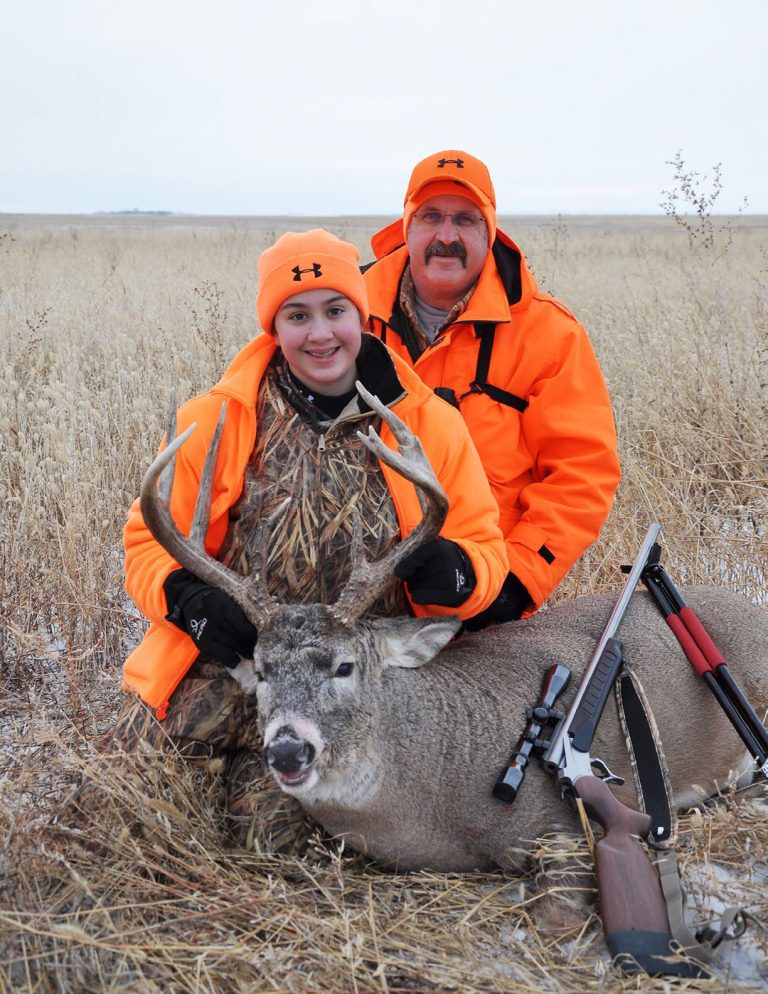Flashback to 2014. It’s the opening day of Whitetail deer rifle season in Saskatchewan. It has just finished snowing and it’s cold outside.
There was 13-year-old me in the backseat of my dad’s truck heading out for my first day of Whitetail deer hunting during the rifle season. In my first year of Whitetail hunting, I tagged out during muzzleloader season.
Now, I was excited for rifle season to begin. As we were driving to our hunting spot, we were talking about our plan for the day, safe shooting and what we might expect to see. At this point I let my dad and his friend know that I was hoping to see some deer and get the chance to shoot a bigger buck than the smaller 4×4 I shot the previous year.
The past few winters had been hard on deer due to large amounts of snow and cold temperatures, and my dad reminded me that deer numbers were low again this year, so we may not see too many on our first day out. Unfortunately, my brother was unable to join us. He was in university and opening day was in the middle of the week. He couldn’t miss classes that day, so my dad’s friend came along. Still, my dad and I planned to go out the coming weekend with my brother along.
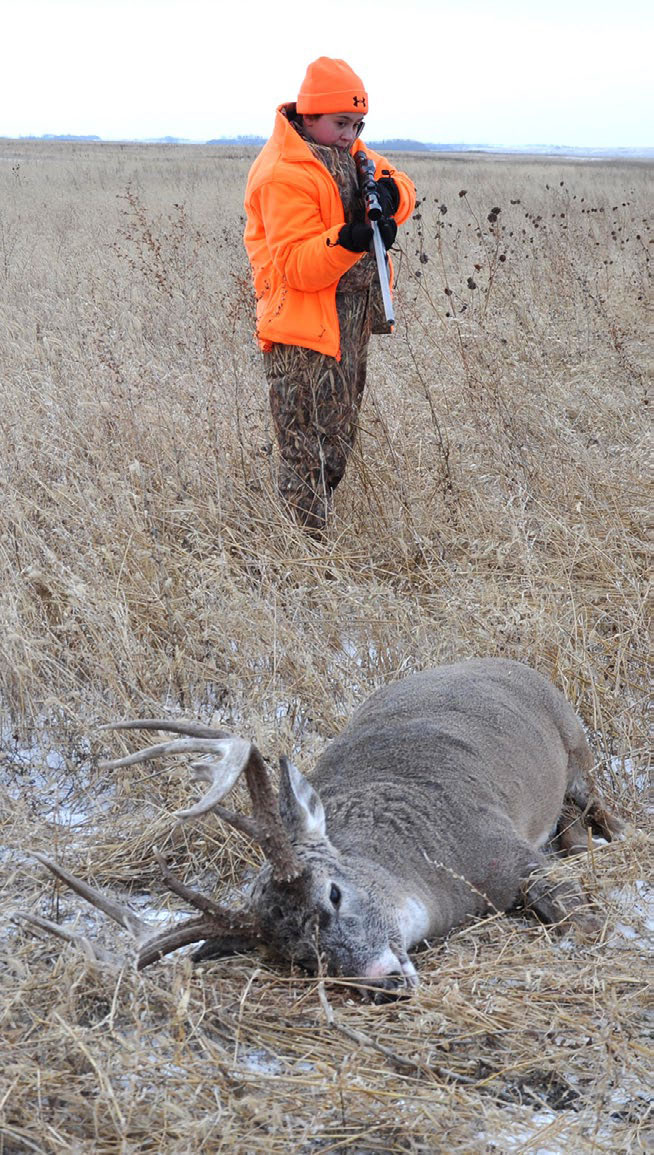
Hoping for a Fight
Just before it was legal light, as we drove to our starting spot, I said aloud, “You know I would really like to see some fighting bucks.” I remembered something that my dad and his friend had seen just a few times up close over their many years of hunting. Still, since you never know what you’re going to see when out hunting, I thought there was a chance, even if it was a slim one.
We started the morning looking into a few of my dad’s favorite spots, but no deer turned up. As we were heading from one spot to another, my dad’s friend said, “Look, Courtney: There are your fighting bucks!” When I glanced about 500 yards into the field on our left, I saw two bucks fighting over a hot doe. I was amazed!
We pulled over on the side of the road to get a better look and to watch this mystical event take place. At the same time, we were determining our plan of attack. After using our vortex binoculars, we determined both were nice bucks, though we weren’t sure how many points they each had. That’s because their antlers were locked together as they were fighting extremely hard, and it was hard to determine.
We decided my dad and I would get out and stalk in towards them to a comfortable but safe distance. We wanted to get a better look at the bucks and potentially take a shot at one of them. At this point, my dad and I exited the truck with my Thompson Center Pro Hunter in .243. My father had modified it with a youth rear stock to make the rifle fit my smaller body size. I also had my bog pod shooting sticks and vortex binoculars. My dad’s friend stayed in the truck and drove it up the road to be out of the deers’ sight, limiting the chances of spooking them and increasing our chances for success.
While the bucks fought over the hot doe, we crouched low to the ground and slowly started moving towards them. After about 50 yards, we stopped to look with our binoculars and saw the doe looking straight at us. We paused, hoping she wouldn’t sense us, but she lifted her tail, made a short grunt and trotted off.
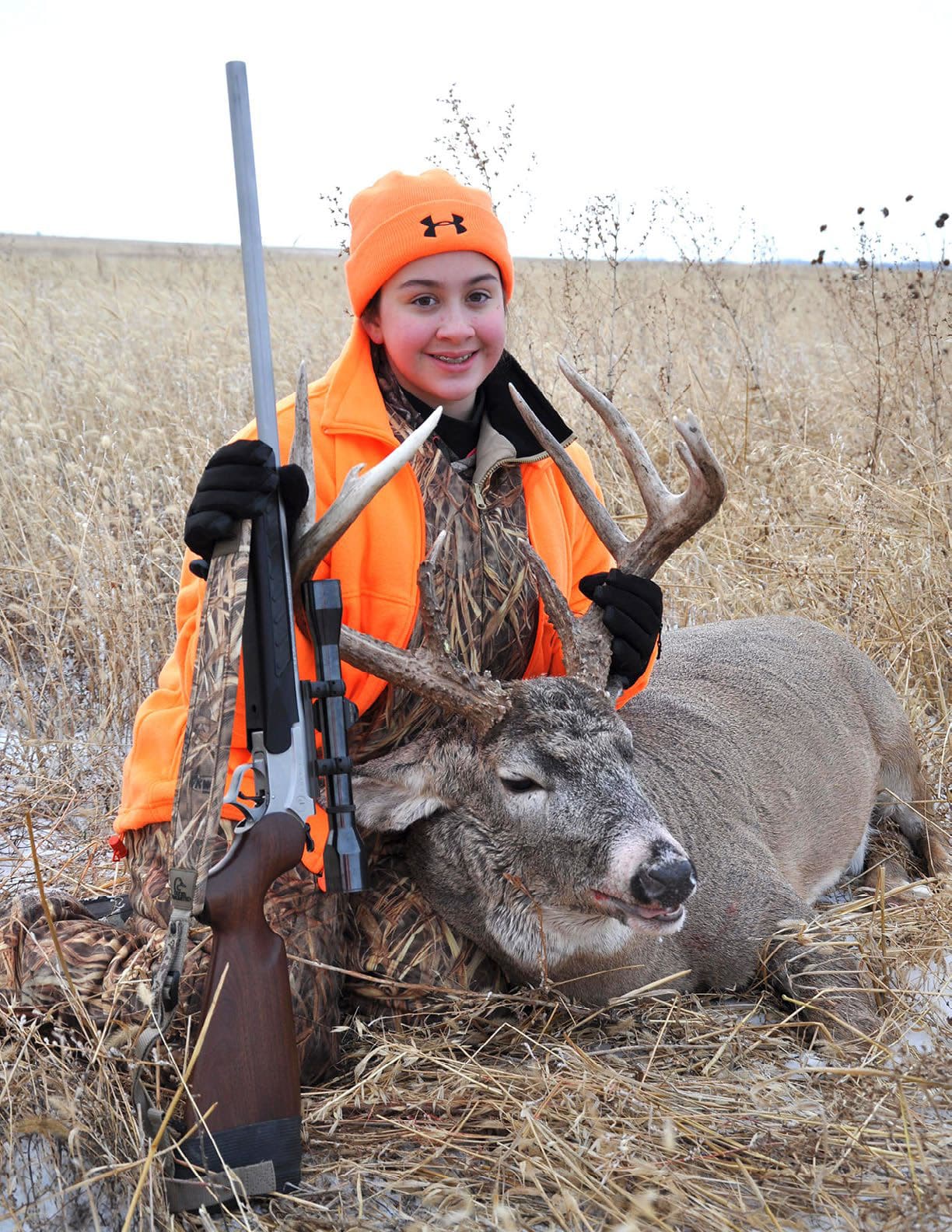
Was It a Bust?
At this, we thought our stalk was a bust, believing the bucks would chase the hot doe. However, we were wrong. They were so intent on fighting that they had no idea the doe had taken off. The bucks continued fighting with their antlers locked and their heads down, causing snow to fly around. We could hear their antlers clash and grind against each other as they continued to fight. We could hear them breathing heavily on this calm, crisp, winter-like morning. They were giving it everything they had.
We continued moving closer and closer until the bucks were about 200 yards away. We then decided we shouldn’t try to get any closer. We sat down in the field and watched them fight. It was absolutely amazing to watch.
As we were sitting and waiting for the bucks to separate, they started fighting closer toward us. We could now hear them grunting and we could feel their hooves banging the ground as they fought back and forth, moving closer to us. As they kept getting closer, my dad started to get concerned for our safety. He even suggested that if they started to get any closer, we should back away rather than end up in the middle of their fight. Watching this fighting spectacle was magical. The bucks would push and pull as hard as they could with their antlers and kick the ground and make snow fly in the air, then grunt with exhaustion.
After what felt like seconds but was really minutes, the two bucks broke apart. They stood about five feet apart staring directly at each other. My dad and I used our binoculars to check them out. The buck on the right was a heavier 5×5, and the buck on the left was a beautiful 4×4. We agreed that the buck on the right was the bigger of the two. He had more tines and his rack was taller.
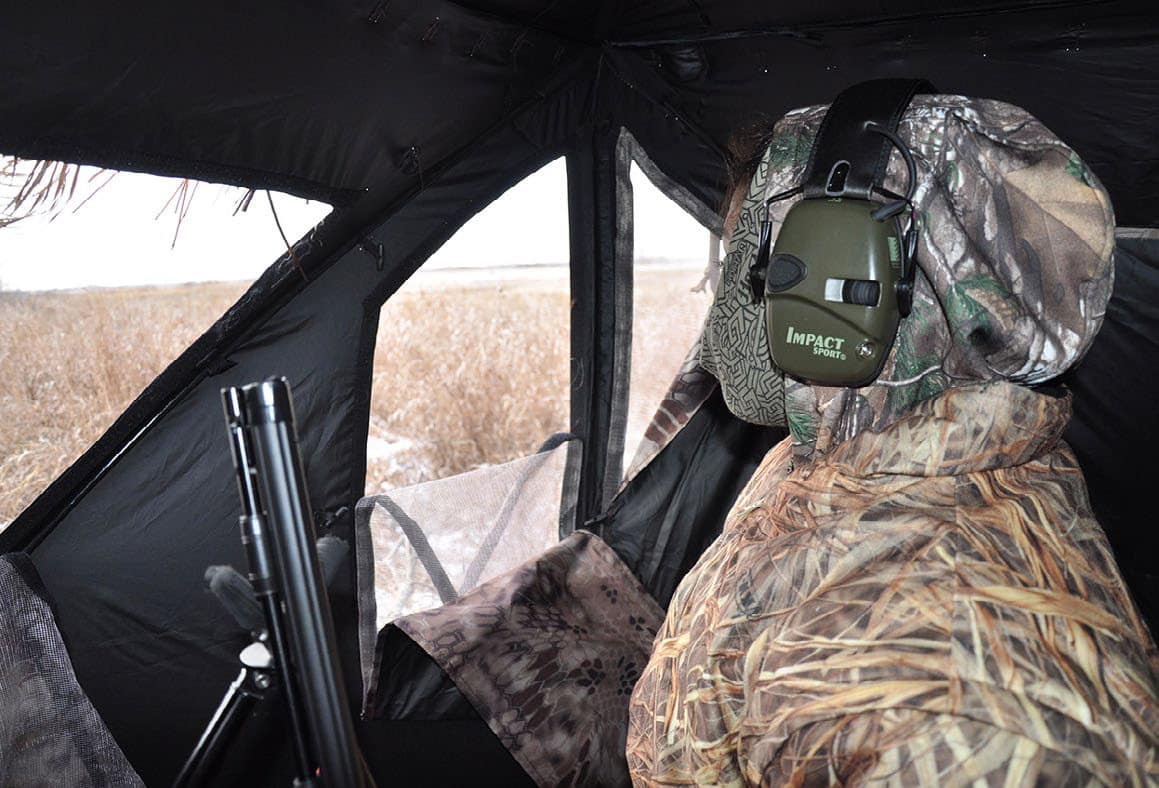
Clocking In
After using the rangefinding binoculars, we clocked the bucks in to just over 150 yards. My dad extended the legs of the shooting sticks and I slowly stood up so I could shoot. I took my time and thought about where I should hold. I leaned into my gun and slowly squeezed the trigger. The leg of one of the shooting sticks was loose and as I squeezed the trigger, the leg fell. My bullet whizzed over the top of the deer. The bucks seemed unphased. They hadn’t even heard the bullet and they continued to grunt and stare at each other.
It turned out that in all the excitement, my dad didn’t secure the stick leg. We quickly remedied that, and I prepared to shoot again. I continued to take my time, slowly squeezing the trigger. We heard the thump of a solid hit. The bullet went straight into the buck’s chest, except that he didn’t go down. He just stood there looking at the other buck. The second buck then came toward the buck I had hit and switched sides with him. My dad told me to reload my rifle and take another shot, even though we knew my first shot was a chest shot. We didn’t want to risk the buck running off.

Second Shot
I again got ready to shoot and slowly squeezed the trigger. Thump. It was through the chest again, but this buck still wasn’t going down. The two bucks just continued to stand and stare each other down. I shot one more time, then finally, down he went. At this point, our excitement was boiling over and we no longer needed to whisper as we started walking towards my downed buck.
The other buck continued to stand there, quite puzzled. He kept looking at my buck and then looking back over his shoulder for the doe. At this point, I told my dad he should shoot the other buck as it would be a great story to tell. He just grinned and told me that this was my moment, and that taking the other deer would spoil that moment. In addition, he had left his gun in the truck. And he didn’t want to end his hunting season just yet.
At the time, I didn’t understand why he passed up the second buck since he could have used my rifle. In thinking back, I now know that he wanted the hunt to be all about my success and the experience he had shared with me.
When we were about 50 yards away, the other buck finally saw us coming and ran off in the same direction as the doe. A few moments later we saw that buck and the doe running off together.
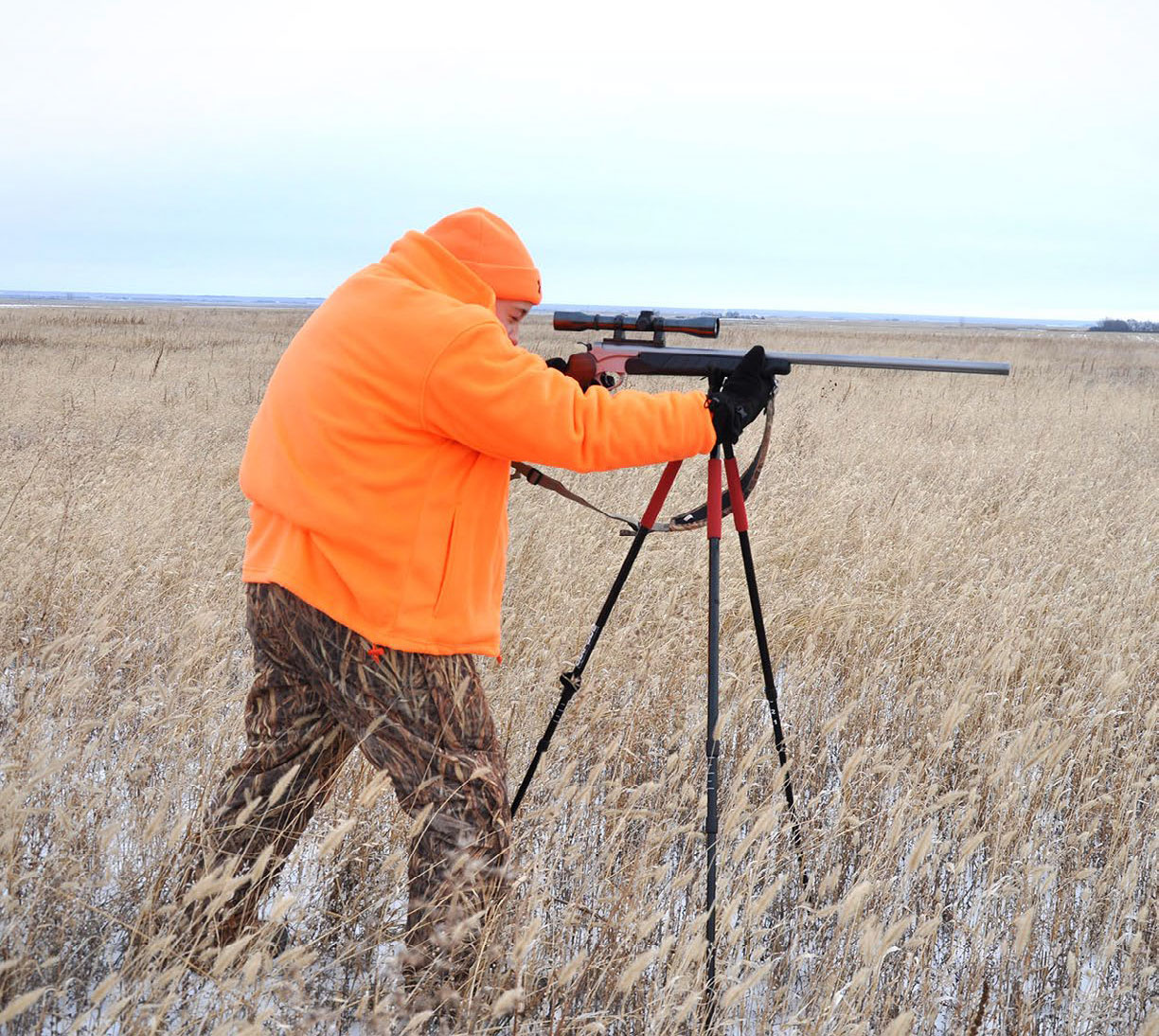
The Excitement!
As we approached my buck, I started to get even more excited! I saw his tall white tines sticking up from the snow-covered ground. After poking the buck to make sure he was dead, we called my dad’s friend to come with the truck to load my deer after taking some field photos. As we were waiting for my dad’s friend to come, we texted my mom and brother a quick photo, telling them I was tagged out so they could share in our excitement.
The condition of my buck was one I had never seen or even heard of before. His neck was incredibly swollen. He was soaking wet with sweat. Not only was he soaking wet, but he also smelled awful, which made 13-year-old me slightly grossed out. (However, the excitement overrode my disgust.)
We took some field photos and then got to work gutting and skinning my deer so we could continue hunting, since both my dad and his friend still had their tags. Before we started, we safely stored my gun in its case, since I no longer had a tag and would not be using it going forward that season.
When we were skinning my deer, we were careful not to put any unnecessary holes in the hide so we could use it for a shoulder mount. Once we were done with skinning, we wrapped my deer in cheese cloth to keep the meat clean.
After loading up my deer and getting back into the truck, we had a quick snack and then continued on to check another spot. During the rest of the day, I had a number of questions about fighting bucks and why my buck did not go down after my first shot. My dad explained that bucks fight to determine dominance for breeding. Since none of my bullets broke shoulder bones, the pure adrenaline running through the buck’s body kept him on his feet and staring at his rival until his lungs collapsed. Dad further explained that a lethally shot deer could run for 100-plus yards, and that’s why it’s important to follow up on every deer you shoot. They can easily run off and fall without you seeing them go down.
Over the course of that day we saw a number of other hunters in the area pushing bush quite close to where I shot my deer. At one point, we saw four trucks and several hunters standing at the edge of a large bush.
Since dad recognized one of the guys there, we pulled over to see what they were up to and what they had seen. We told them I had tagged out in the morning and they stepped over to look at the buck I had taken. They told us they had seen my deer prior to the season opening, and that they were all out trying to find him. Although they were slightly disappointed that none of them were able to get him, they were happy that I was able to, especially as a young hunter.
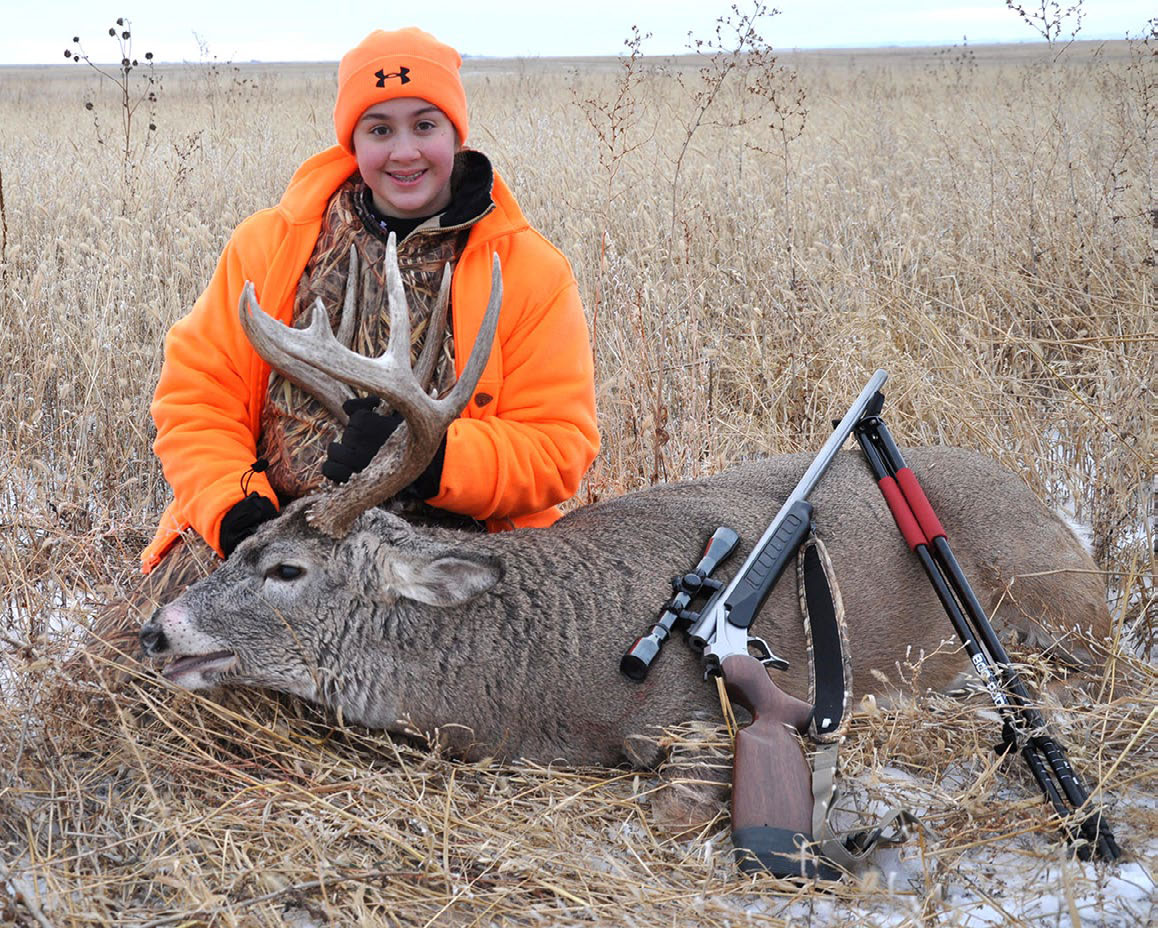
Flash to Today
Flash forward to today, where I now have a few more years of hunting experience under my belt. I now know that when bucks are in the rut and specifically when they are fighting, they are filled with adrenaline. They are so focused on winning the fight to get the hot doe that their other senses are not as strong. They may not realize when they are in danger or when they have been injured, or even when their doe has run off. I have come to learn that deer don’t always fall right away when shot, and that if they are still upright, it is best to shoot them until they fall down. I have also learned that if you shoot at a deer and it runs off and out of sight without any sign of being hit, you should follow up and track that deer, because often you will find a downed deer.
In Retrospect
Today when we talk about this hunt, my dad admits that when the bucks started coming toward us, he started to get concerned. He was worried that the fighting bucks might run over the top of us and he didn’t have a gun with him. He says he was so mesmerized and intrigued by the action in front of us that he had us hold our position and let the action unfold.
Watching bucks in the rut, specifically when they are fighting over a hot doe, is an unbelievable experience. It’s one I hope all hunters can experience at least once in their hunting career. If you do ever get the chance to stalk in on fighting bucks, be sure to soak in the whole experience. You’ll see something that few people get to see up close but be sure to remember not to get too close. You do not want to become part of the fight!
Per our affiliate disclosure, we may earn revenue from the products available on this page. To learn more about how we test gear, click here.



